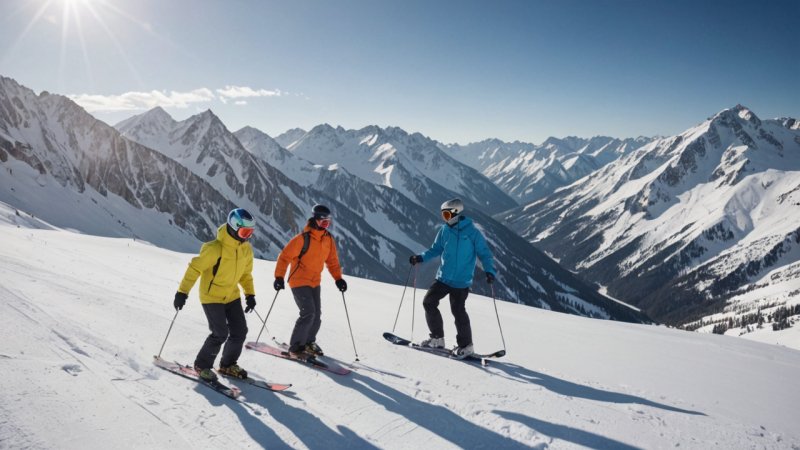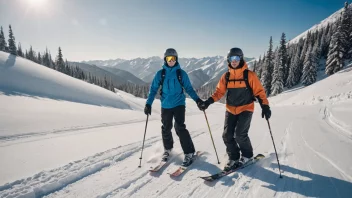Introduction
In the exhilarating world of winter sports, athletes face not only the thrill of competition but also the unpredictable nature of weather conditions. From blizzards to bright sunny days, the weather can significantly influence safety and performance on the slopes. In this article, we will guide you through the essential steps to understand how various weather conditions impact winter sports safety, and how to prepare effectively for your activities.
Step 1: Recognizing Weather Conditions
The first step to ensuring safety in winter sports is to recognize and understand the different weather conditions that can arise. Here are key factors to consider:
- Temperature: Extreme cold can lead to frostbite and hypothermia.
- Wind: High winds can create difficult visibility and increase the risk of accidents.
- Precipitation: Snow, sleet, or rain can affect traction and visibility on the slopes.
- Visibility: Fog or heavy snowfall can reduce sightlines, making navigation hazardous.
Step 2: Check Weather Forecasts
Before heading out, always check the weather forecast. Reliable sources include:
- Local News Channels: They often provide detailed weather reports tailored to your area.
- Weather Apps: Use smartphone apps that specialize in outdoor activities.
- Online Weather Services: Websites like NOAA or Weather.com can offer real-time updates.
Ensure you are checking forecasts not just for your location but also for the areas you plan to ski or snowboard.
Step 3: Prepare for Different Conditions
Once you understand the forecast, prepare accordingly:
- Cold Weather: Wear layers, including moisture-wicking base layers, insulating layers, and waterproof outer layers.
- Windy Conditions: Ensure that your gear is secured, and consider using face protection like masks or goggles with wind-proofing.
- Snowy Conditions: Use equipment with good traction, and ensure your snow gear is waterproof to prevent getting wet.
- Low Visibility: Opt for bright colors and reflective gear, and carry a flashlight or headlamp if conditions worsen.
Step 4: Adjust Your Techniques
Different weather conditions may require adjustments to your athletic techniques:
- In Cold Conditions: Warm up thoroughly to keep your muscles flexible and reduce the risk of injury.
- In Windy Conditions: Maintain a lower center of gravity and stay balanced to counteract strong gusts.
- On Slippery Surfaces: Use wider stances and slower, more controlled movements to maintain stability.
- When Visibility is Poor: Ski or snowboard at a reduced speed, and use your edges more than usual for control.
Step 5: Monitor Your Body
Always be aware of how your body responds to the weather:
- Signs of Cold Stress: Watch for signs of frostbite, such as numbness or discoloration in extremities.
- Hydration: Cold weather can mask dehydration; ensure you are drinking enough fluids.
- Fatigue: Pay attention to fatigue levels, as adverse weather can increase exertion and lead to quicker exhaustion.
Step 6: Know When to Call It a Day
Sometimes, it’s best to recognize when conditions are simply too dangerous:
- Heavy Snowfall: If visibility drops to unsafe levels, consider returning to a safe area.
- Extreme Cold: If the temperature drops significantly, it's best to head indoors.
- Severe Weather Alerts: Always heed warnings from local authorities regarding hazardous weather conditions.
Conclusion
In summary, understanding the impact of weather conditions on winter sports is crucial for both safety and performance. By recognizing varying weather effects, checking forecasts, preparing appropriately, adjusting your techniques, monitoring your body, and knowing when to call it a day, you can enhance your winter sports experience while ensuring your safety. Always prioritize preparation and awareness to enjoy the thrill of winter sports without compromising your well-being.






